Basically, nothing has changed. Seriously.
Review and photos by Tom Sedens
I was excited to learn Toyota was sending me a 4Runner, because there’s something about driving one of the last body-on-frame, true 4×4 SUVs that makes me happy. This is where the crossovers were born, and the 4Runner stubbornly refuses to change. That’s awesome in some ways. Because it’s is as rugged as they come and genuinely capable when it comes to off-roading. They’ve been building this beast for over 30 years.
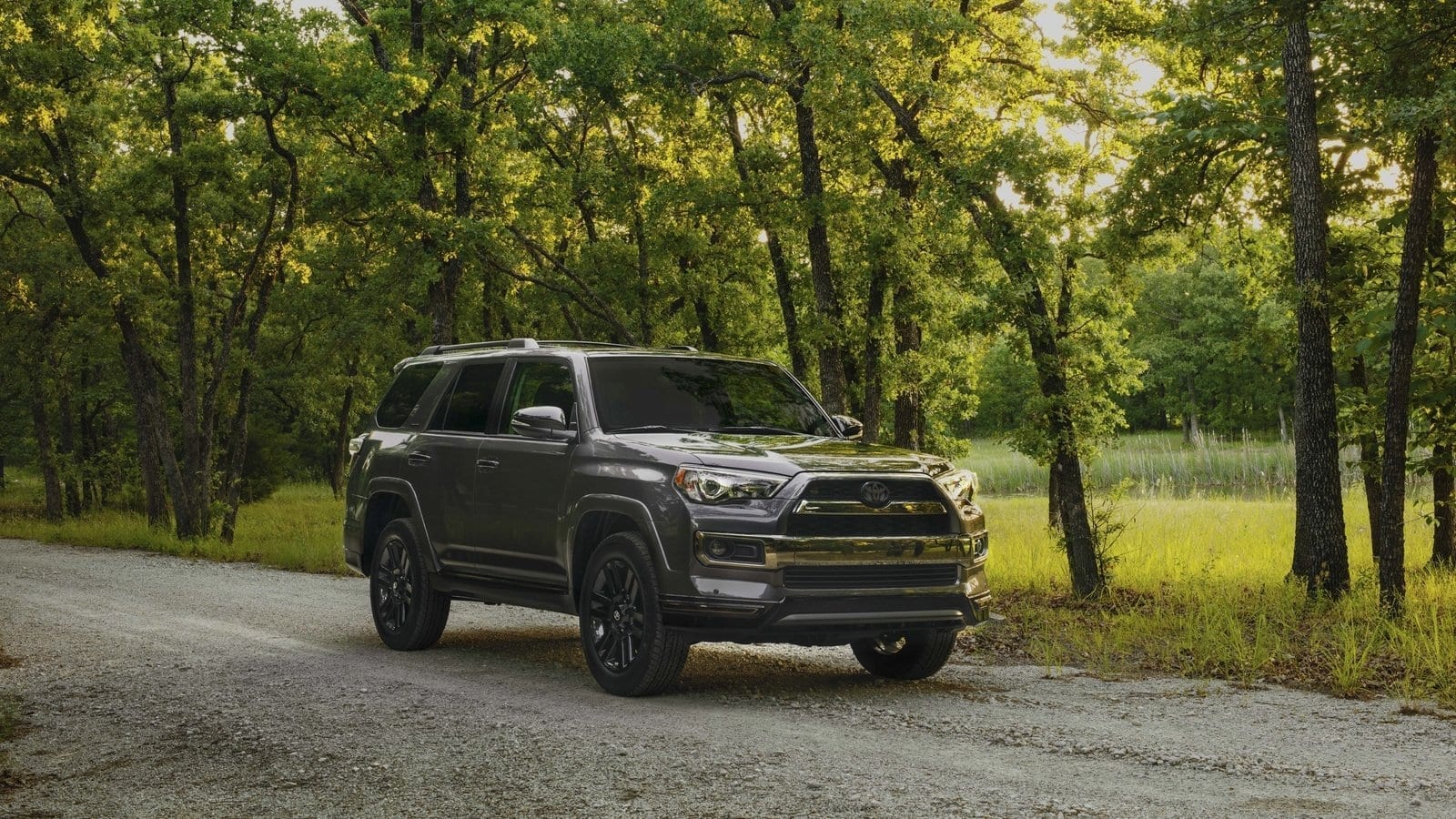
Pricing: 2019 Toyota 4Runner
Base price: $46,155
Options: $8,960 Nightshade 7-passenger option
Freight: $1,815
A/C tax: $100
Price as tested: $57,030
I apologize about the pictures. I pride myself in almost invariably presenting you, the good reader, with my own original photography of the vehicles I review. However, in the case of the 4Runner, weather and a medical procedure of mine conspired against me, and I was unable to take pictures of it. Suffice it to say, as you’ll read shortly, little has changed so if you want more detailed pictures, please refer to my review of one from a few years ago because yes, it’s basically the same thing.
Exterior
So yeah, that pricey option package is about all that has changed since I last reviewed one of these – four years ago. So when it comes to the exterior, it looks familiar. It’s a tall, bulky, rugged-looking SUV. It’s big, like really big. It’s high off the ground.
My review sample was enhanced with the new-for-2019 Nightshade option package. Even though I understand it’s about the blacked-out trim, why you’d name an option package after a group of potatoes, fruits and vegetables is beyond me.
The Nightshade package adds a number of aesthetic changes, and one really, really great addition. You get black 20″ alloy wheels, blacked out treatment for the grille, mirrors, door handles, bumper accents and rocker panels. And the best part – the power running boards that extend down and out to greet you and retract back up under the door sills when you close the door. That’s handy and also a thousand times better than the half-width, slippery ones that you can get on the 4Runner.
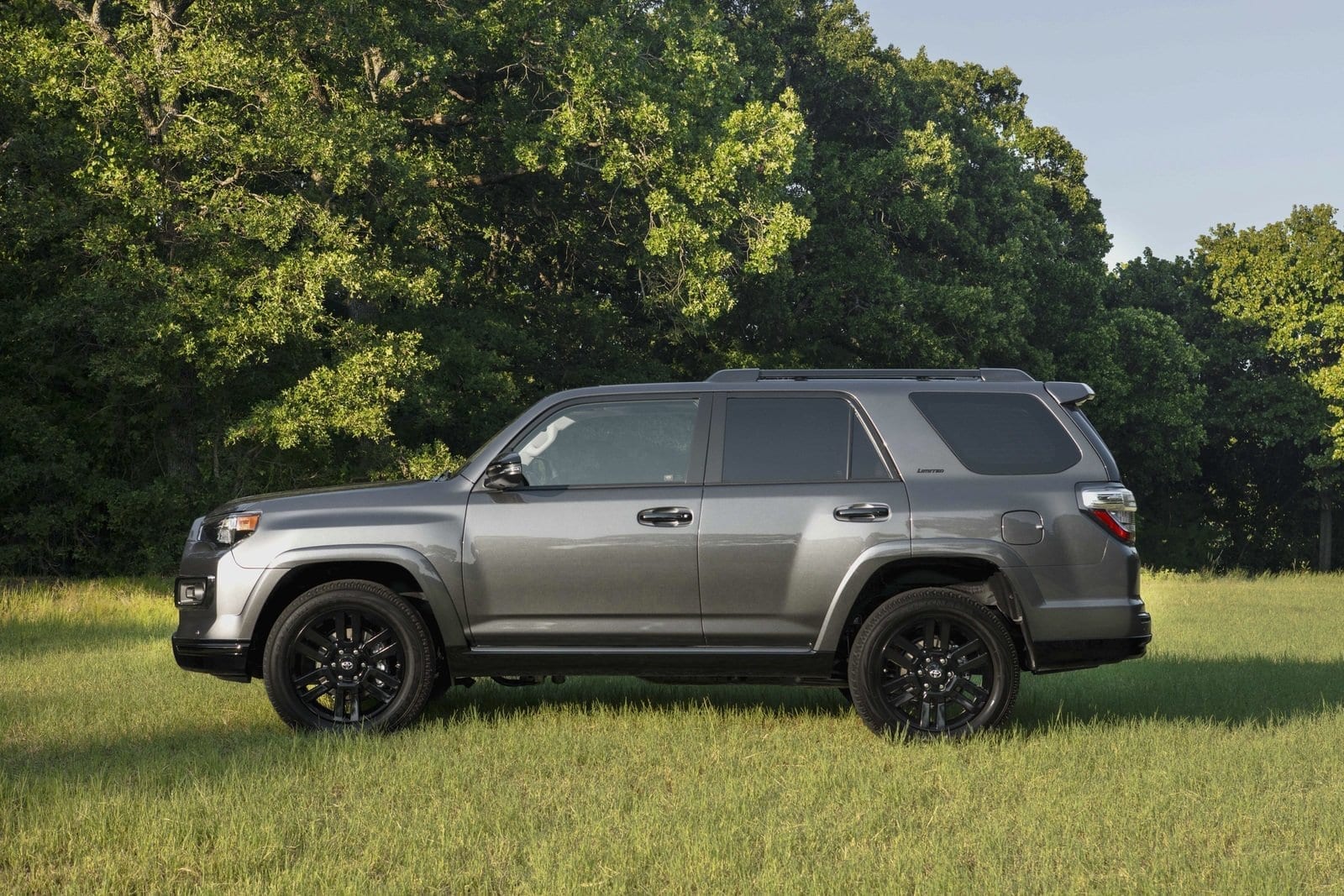
Interior/Tech/Convenience
Let’s stick with the theme of “nothing has changed”. If you fear change, you’ll enjoy 4Runner ownership. Virtually every button, screen and knob remains unchanged. Toyota certainly hasn’t put any effort into developing this thing and little issues that may have been kind of cute and quirky four years ago have become laughable now.
So what’s good here? The heated and ventilated leather seats and the driving position – very comfortable and affording a wonderful view of the road ahead. The JBL audio system – quite good.

The main screen is tiny. Seriously. At 6.1″, it has likely become one of the industry’s smallest. It uses Toyota’s standard user interface which is showing its age but still functions well. You get navigation and of course it also handles your media/music and your phone.
For this kind of money, you obviously get a serious amount of driver assistance technology. Um, well in other vehicles you do. But not here. Honestly, it’s the bare basics and nothing more. You get a back-up camera and front and rear parking sensors. That’s it. Not even blind-spot monitoring. That’s ridiculous in an expensive SUV, and particularly when you take into consideration that Toyota has included all of its great tech as standard equipment in virtually all the other vehicles it builds.
Rear Seats
The reclining rear seats are relatively comfortable with good legroom, but there’s a surprising lack of headroom. I’m 5’10” and anyone much taller than me will be bumping their head into the headliner.
Our three kids were comfortable in the second row, and there are two sets of LATCH anchors for child seats if you need those.
A big change is one that is barely worth mentioning – the third row. It’s practically useless and would be good for emergency cases only. Furthermore, when the third row is in use, you won’t even be able to fit a standard shopping bag width-wise behind it. The trunk becomes useless.
Storage
There are a few places around the cabin to put your stuff – some useful, some not.
I can’t wait to open the trunk remotely and see what this thing will all handle for cargo capacity. Oh wait, yeah, there’s no power trunk lid. Seriously? In a $57,000 SUV? Yes, that’s the sad truth. Oh but Toyota’s traditional power window in the trunk lid slides down like a car window. And you can do that with a remote switch. So you can lower the rear window with a button, but you can’t open the trunk with a button? That’s dumb.
The trunk itself is quite large at 1337L and grows to a monstrous 2540L with the second row folded down. You’ll find a 110V household plug as well as a 12V plug back there. However, heaven forbid you need to use the third row and require useful trunk space, because you can’t have both.

Under the Hood
Must be something new here, right? Nope. Still the same 4.0L V6 putting out 270HP and 278 lb.ft of torque. And yes, still the same 5(!!!)-speed automatic transmission. Are you kidding me? My mid-2000s Audi had a 6-speed transmission. Modern vehicles have 8-10 speeds. The 4Runner sticks with 5. And a true 4×4 system.
Needless to mention, fuel efficiency isn’t the 4Runner’s forte. It’s rated at 14.3/11.9 L/100 km city/highway. We ended up with an average of 15.8L/100 km. That’s truly awful and puts the 4Runner squarely in half-ton truck territory for fuel economy.
The Drive
I can poo-poo the ancient drivetrain as much as I want, but I have to give the 4Runner props where they’re deserved. Off the line, it accelerates smoothly and smartly, and there’s plenty of power.
Once you’re on the go, the lack of gears becomes obvious and it doesn’t make the best use of its power. The transmission’s Sport mode is basically useless as it just hangs on to gears longer. It does nothing to make the driving experience sportier.
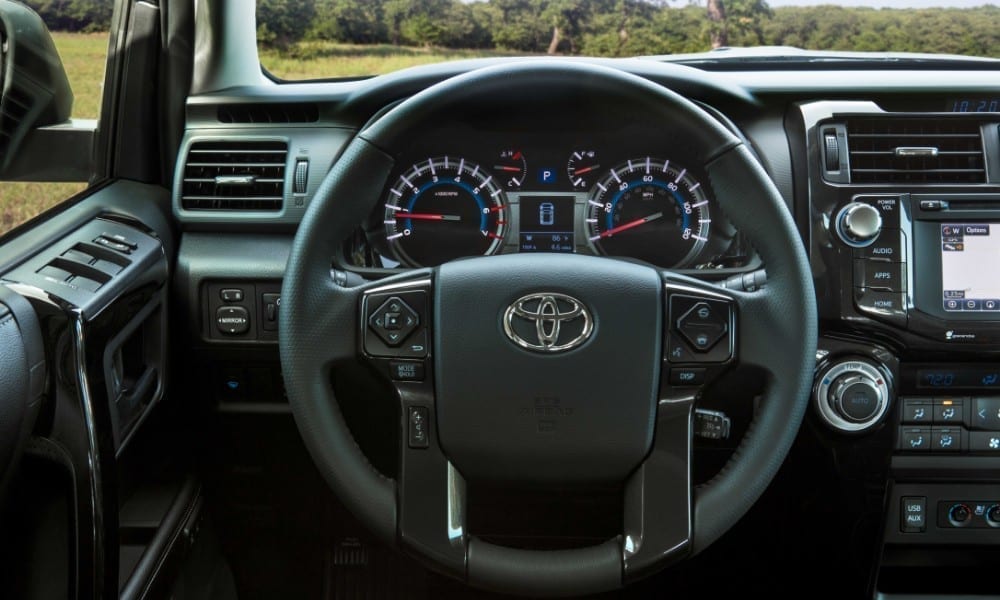
The ride remains comfortable and pretty smooth, but once you start traversing some more irregular (read: Edmonton) roads, your off-road-worthy SUV will remind you of its roots and it gets a bit too jiggly for my taste. With that said, it’s never harsh either. Handling is fine for a big tall SUV – just expect a bunch of body lean when you throw it into the curves.
We were very impressed with the noise levels – even at highway speeds, the 4Runner is quiet.
The full-time 4×4 system allows you to shift on the fly between high and low ranges. There are also a number of off-roading tools you can use, such as hill descent mode and Active Traction Control. The fuel tank and transfer case are protected by skid plates. And the numbers are truly impressive – nearly 10″ of ground clearance, 33-degree approach angle and 26-degree departure angle. This thing isn’t messing around.
Parking the 4Runner was a hateful experience. It has one of the worst non-truck turning circles – 11.4 metres – in the business, and you can count on adding a few extra points to your parking maneuvers. Oh and you know how basically every vehicle for the last two decades has had the tap-your-signal-stalk-for-three-blinks for changing lanes feature? Yeah, the 4Runner doesn’t do that. Unbelievable.
If you tow, the 4Runner is quite capable, pulling up to 5000 pounds.
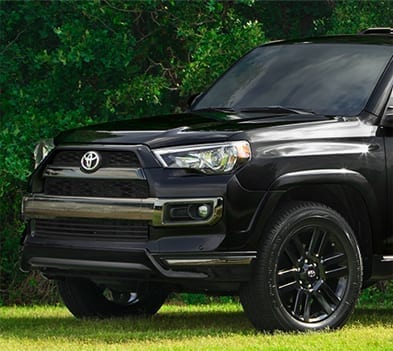
The Verdict
WAF (Wife Approval Factor) was moderately high. She enjoyed driving it (other than parking it) and said she liked how it felt on the road.
Basically the 4Runner is built on a truck platform, and because of its uncompromising nature, it has to be the 4Runner owner who is making the compromises. You’re giving up a lot in terms of space, comfort, utility, efficiency and modern features/conveniences. So why do people buy these? I actually don’t know. Sure, there’s the vault-like feeling when you’re driving it, there’s the knowledge that you can conquer almost anything with it and the astronomical reliability and resale factors. Other than that…. who knows? I have a co-worker who just bought a Limited-trim 4Runner and literally could not explain to me why he chose it. I know for a fact that the vast majority of 4Runner buyers aren’t taking them off-road, which means its one huge advantage over other SUVs is being squandered. So if you’re not using it off-road the way it was intended, why would you spring for this thing over a crossover like the Highlander on the other side of the Toyota showroom? I know that’s where I’d be headed.
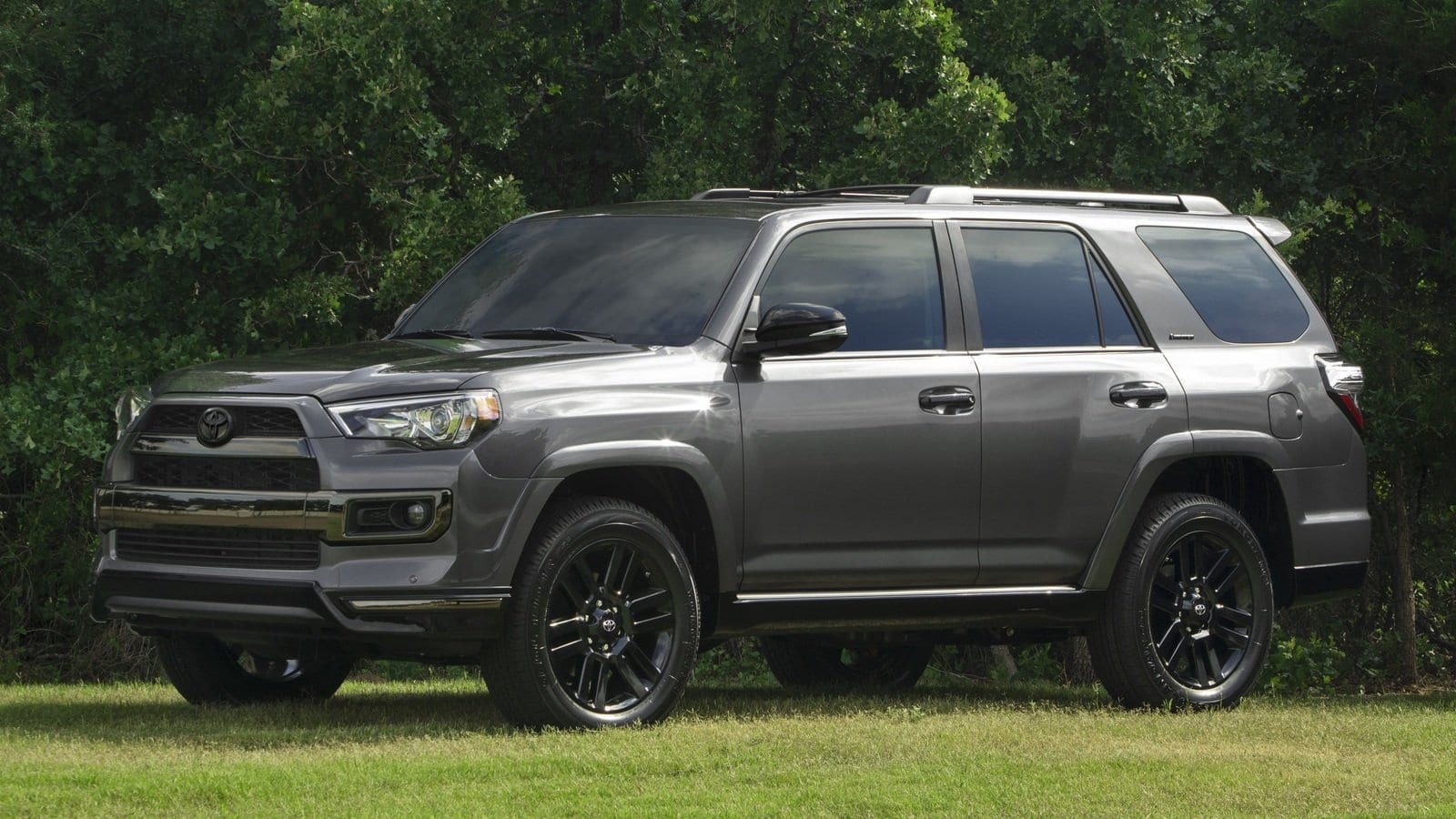
Disclosure: Vehicle was provided by Toyota Canada.
If you enjoyed this review, feel free to check out my other vehicle reviews under the car reviews tab at the top of my blog.
